Research Article Open Access
A Phenomenon found in the Transcriptional Regulation Study on Mouse Melanocortin 3 Receptor—Link the Transcriptional Activity with the Phosphorylation and Glycosylation of Transcription Factors
| Wen X1, Zeng WW1* and Jack A Yanovski2 | |
| 1Developmental Neurobiology Section, NHLBI, NIH, USA | |
| 2UGO, Eunice Kennedy Shriver, NICHD, NIH, USA | |
| Corresponding Author : | Zeng WW Developmental Neurobiology Section NHLBI, NIH, USA Tel: +1 301 496 2651 Fax: +1 301 402 0574 E-mail: xin.wen@nih.gov |
| Received November 26, 2013; Accepted December 17, 2013; Published December 19, 2013 | |
| Citation: Wen X, Zeng WW, Yanovski JA (2013) A Phenomenon found in the Transcriptional Regulation Study on Mouse Melanocortin 3 Receptor—Link the Transcriptional Activity with the Phosphorylation and Glycosylation of Transcription Factors. J Obes Weight Loss Ther 3:202.doi:10.4172/2165-7904.1000202 | |
| Copyright: © 2013 Wen X, et al. This is an open-access article distributed under the terms of the Creative Commons Attribution License, which permits unrestricted use, distribution, and reproduction in any medium, provided the original author and source are credited. | |
Visit for more related articles at Journal of Obesity & Weight Loss Therapy
Abstract
Melanocortin 3 receptor (MC3R) is involved in the regulation of energy homeostasis. Study on mouse MC3R promoter has been performed following the determination of its transcription starting site, mouse MC3r deletion constructs were built by sub cloning into pGL3 vector, then the gene reporter assay of the seven deletion constructs was tested by Dual Luciferase Assay.
On the other hand, phosphorylation and glycosylation play an important role in the transcription regulation. The global distribution of phosphorylation and glycosylation on transcription factor could be found in open source database.
In this report, relative luciferase activity and the distribution of phosphorylation-glycosylation sites on promoter model transcription factor were plotted, for the first time, on the same chart, within a 3.2 kb upstream the methinoin ATG, the two trend lines of the relative luciferase activity and the distribution of phophorylation-glycosylation sites, they were found tend to be negative reciprocal.
| Keywords |
| Transcirptional regulation; Promoter; Epigenetic control; 5’UTR; Promoter model |
| Abbreviations |
| MC3R: Melanocortin 3 Receptor; MC3r: Melanocortin 3 Receptor Genes; 5’UTR: 5 Untranslated Region; DLA: Dual Luciferase Assay |
| Introduction |
| Melanocortin 3 receptor (MC3R) is expressed at high levels [1-3], in the arcuate nucleus and ventromedial nucleus, and mainly controls the conversion of food to fat, nutrient partitioning and build-up of lean mass. It is also shown that the MC3R may affect body fat [4] and food intake through both central and peripheral mechanisms. Simultaneously, of the five known members of signal peptide related rhodopsin GPCRs, promoter study of other melanocortin receptors promoters (MC1r [5], MC4r [6], and MC5r [7]) stimulates the study of MC3R promoter. |
| Furthermore, primary gene induction or repression in eukaryotes does not require protein synthesis, suggesting the involvement of posttranslational modifications [8]. Since many different types of stimuli that affect gene expression also lead to the activation of protein kinases, analysis of transcription factor phosphorylation is essential for complete understanding of the signal pathways. The activity of transcription factors maybe modulated by their signal-sensing domain including phosphorylation [9]. In addition, a nutrient sensitive sugar modification, glycosylation interface with the epigenetic control of gene expression. |
| The curiosity to the regulatory complex, the activity of transcription machinery, the range of regulatory mechanism and the post translation modification in the epigenetic transcription regulation made us start the promoter study of MC3R. |
| Materials and Methods |
| Determination of transcription starting site of mMC3r using 5’RACE |
| Determination of transcription starting site by 5’RACE was performed on total Mus musculus hypothalamus total RNA using the 5’RLM-RACE kit (Ambion, Invitrogen). Total mouse hypothalamus RNA treated [10] with CIP (Calf Intestine Alkaline Phosphatase) to remove free 5’-phosphates then treated with TAP (Tobacco Acid Pyrophosphatase) to remove the cap structure from full-length mRNA (exposing a 5’-monophosphate). A RNA adapter oligonucleotide was then ligated to the full-length RNA species using T4 RNA ligase. Firststrand cDNA was synthesized twice, using random decamers and genespecific RT primers. We amplified 5’ cDNA ends using a nested PCR approach, where the nested 5’ primers were specified by the adapter oligonucleotide sequence and the nested 3’ primers were MC3Rspecific. PCR products were then sub-cloned for sequencing. |
| Cloning of 5’ flanking mMC3r luciferase reporter vectors |
| Serious deletion fragments was constructed using 7 forward primers ranging from 3174 bp to 373 bp respectively, and reverse primer 116 bp upstream ATG (Table 1), by PCR amplification with template of 3.2 kb 5’flanking from Mus musculus (C57BL/6J) assembly sequence. Series deletion fragment containing sequences extending from 3084 bp to 283 bp were subcloned into the upstream of the firefly luciferase gene in pGL3 vector. |
| Cell transfection and Dual Luciferase Assays (DLA) |
| Human HEK293 was transiently transfected using FuGENE’6 Transfection Reagent (Roche). 48 hours after transfection and over 65% cell confluency, add luciferase reagent and measure at luminometer OPTIMA (BMG LABTECH). Renilla was cotransfected and used to normalize the transfection efficiency. Assay was tested by triplicates on independent experiments. |
| Glycosylation and phosphorylation sites of promoter models |
| Promoter model [11] [A promoter model represents a framework of two or more conserved elements (e.g., transcription factor binding sites) with a defined distance (and strand orientation). Usually, promoter models are much more specific than single elements like transcription factor binding sites. Therefore, a promoter model can give higher evidence that the matching sites are functional.] Of the corresponding deletion constructs were inspecting by Genomatix, the glycosylation or phosphorylation sites on the model element (transcription factors) of promoter model were searched by Protein Knowledgebase of Uniprot. |
| Results and Discussion |
| Determination of the transcriptional start sites of the Mus musculus MC3r by 5’RLM RACE |
| Sequence analysis of the amplified products obtained by 5’RLM RACE performed on mouse hypothalamic RNA mapped [12] four initiations of transcription sites. Of those, a major site, at position -368bp from the initiating methionine, is corresponding to the predicted transcription start site according to GenBank. Additional sites were found at -432bp, -351bp and -347bp from the translational start site ATG. |
| Gene reporter assay in study of transcriptional activation and regulation of mMC3r |
| The reporter vectors of 7 kinds of mMC3r promoter deletion mutants were successfully constructed (Figure 1a), as confirmed by restriction enzyme digestion and sequencing. The activities of all constructs in pGL3 basic in HEK293 are shown (Figure 1b). The relative luciferase activity won’t be changed a lot from P3 to P4 (2.596 to 2.844), P5 and P6 (3.010 to 3.098), and there is an obvious decrease from P6 (3.098) to P7 (1.845), at the same time, a significant increase was found from P2 (1.343) to P3 (2.596). Therefore, there should be core promoter sequences that are chopped between the -604bp (Table 1) to -373bp, there must be transcription repressor between the 2170 bp to 1178 upstream of the methionine ATG. |
| Promoter activity in response to forskolin or PMA stimuli |
| Forskolin, the potent activator of adenylate cyclase system and the biosynthesis of cyclic AMP, stimulated gene transcription by phosphorylation of CREB at serine 133 [13] and PMA (phorbol- 12-myristate-13-acetate) potentiated the effect of low forskolin concentractions on CRH transcription and CREB phosphorylation [14]. Investigation whether the promoter activity is induced in response to forskolin or PMA stimuli has been performed. As it shown in Figure 2, Forskolin stimulate Dual Luciferase Activity in constructs P5 and P6. While PMA suppress a little bit compare with that of none treated (basal) expression. |
| Glycosylation and phosphorylation sites inspect and search on mMC3r promoter models |
| It should be noted: not O-GlcNAcylation but glycosylation could be found in database. As it shown in Table 3, On P1 , start from -3114 bp , there are G site on model E2FF_SP1F_01 at -3054 bp , from TF V$SP1F ; G site on model CEBP_CREB_01 at -2812 bp , from TF V$CREB ; G site on model NFKB_SP1F_04 at -2438 bp , from TF V$SP1F ; G site on model EGRF_SP1F_01 at -2383 bp , from TF V$SP1F ; G site on model KLFS_SP1F_01 at -2383 bp , from TF V$SP1F ; G site on model NR2F_SF1F_01 at -2278 bp , from TF V$SP1F . On P2 , start from -2170 bp , there are G site on model SMAD_EBOX_02 at -1982 bp , from TF V$EBOX ; G site on model CEBP_EBOX_01 at -1982 bp , from TF V$EBOX ; G site on model CREB_EBOX_02 at -1982 bp , from TF V$CREB ; G site on model CREB_EBOX_02 at -1982 bp , from TF V$EBOX ; G site on model EBOX_SREB_01 at -1982 bp , from TF V$EBOX ; G site on model EBOX_SREB_01 at -1982 bp , from TF V$EBOX[from different promoter module (promoter modules form a functional unit, allowing synergistic or antagonistic effects for a specific activation or repression of a gene) of the same promoter model] ; G site on model EBOX_SREB_01 at -1981 bp , from TF V$EBOX ; G site on model EBOX_SREB_01 at -1981 bp , from TF V$EBOX . On P4, start from -978 bp , there are G site on model SORY_ ETSF_01 at -773 bp , from TF V$SORY . On P5 , start from -765 bp , there are G site on model SP1F_YY1F_01 at -704 bp , from TF V$SP1F ; G site on model ETSF_SP1F_05 at -704 bp , from TF V$SP1F ; G site on model E2FF_SP1F_01 at -686 bp , from TF V$SP1F ; G site on model SP1F_ETSF_01 at -686 bp , from TF V$SP1F. on P6, start from -604 bp, there are G site on model SP1F_ETSF_04 at -517 bp , from TF V$SP1F ; G site on model SP1F_MYOD_01 at -517 bp , from TF V$SP1F . |
| As it shown in Table 4, between P1 and P2, there are phosphorylation site on promoter model: there are P site Phosphorylation site) on model E2FF_SP1F_01 at -3054 bp, from TF V$SP1F ; P site on model E2FF_SP1F_01 at -3036 bp, from TF V$E2FF ; P site on model ETSF_ETSF_02 at -2897 bp, from TF V$ETSF ; P site on model IRFF_ETSF_02 at -2897 bp, from TF V$ETSF ; P site on model IRFF_ETSF_02 at -2892 bp, from TF V$IRFF ; P site on model ETSF_ETSF_02 at -2884 bp, from TF V$ETSF ; P site on model EGRF_NFAT_01 at -2815 bp, from TF V$NFAT ; P site on model CEBP_CREB_01 at -2812 bp, from TF V$CREB ; P site on model CEBP_CREB_01 at -2811 bp, from TF V$CEBP ; P site on model HAND_GATA_02 at -2806 bp, from TF V$HAND ; P site on model HAND_GATA_02 at -2789 bp, from TF V$GATA ; P site on model GATA_MYOD_01 at -2741 bp, from TF V$MYOD ; P site on model GATA_MYOD_01 at -2683 bp, from TF V$GATA ; P site on model SMAD_AP1F_03 at -2651 bp, from TF V$AP1F ; P site on model OCT1_CEBP_01 at -2593 bp, from TF V$OCT1 ; P site on model OCT1_CEBP_01 at -2583 bp, from TF V$CEBP ; P site on model NFKB_SP1F_04 at -2472 bp, from TF V$NFKB ; P site on model SMAD_EBOX_02 at -2462 bp, from TF V$SMAD ; P site on model SMAD_AP1F_03 at -2462 bp, from TF V$SMAD ; P site on model NFKB_SP1F_04 at -2438 bp, from TF V$SP1F ; P site on model EGRF_SP1F_01 at -2383 bp, from TF V$SP1F ; P site on model KLFS_SP1F_01 at -2383 bp, from TF V$SP1F ; P site on model KLFS_SP1F_01 at -2367 bp, from TF V$KLFS ; P site on model NR2F_SF1F_01 at -2278 bp, from TF V$SP1F ; P site on model NR2F_SF1F_01 at -2271 bp, from TF V$NR2F ; P site on model NF1F_NR2F_01 at -2270 bp, from TF V$NF1F ; P site on model NF1F_NR2F_01 at -2256 bp, from TF V$NR2F ; P site on model EBOX_SREB_01 at -2249 bp, from TF V$SREB ; P site on model EBOX_SREB_01 at -2241 bp, from TF V$SREB . |
| Between P2 and P3, there are P site on model CEBP_EBOX_01 at -1992 bp, from TF V$CEBP ; P site on model SMAD_EBOX_02 at -1982 bp, from TF V$EBOX ; P site on model CEBP_EBOX_01 at -1982 bp, from TF V$EBOX ; P site on model CREB_EBOX_02 at -1982 bp, from TF V$CREB ; P site on model CREB_EBOX_02 at -1982 bp, from TF V$EBOX ; P site on model EBOX_SREB_01 at -1982 bp, from TF V$EBOX ; P site on model EBOX_SREB_01 at -1982 bp, from TF V$EBOX ; P site on model EBOX_SREB_01 at -1981 bp, from TF V$EBOX ; P site on model EBOX_SREB_01 at -1981 bp, from TF V$EBOX ; P site on model EBOX_SREB_01 at -1726 bp, from TF V$SREB ; P site on model EBOX_SREB_01 at -1718 bp, from TF V$SREB ; P site on model SORY_SF1F_01 at -1373 bp, from TF V$SF1F ; P site on model SORY_SF1F_01 at -1317 bp, from TF V$SORY ; P site on model NF1F_NR2F_01 at -1250 bp, from TF V$NR2F ; P site on model NF1F_NR2F_01 at -1234 bp, from TF V$NF1F. |
| Between P3 and P4, there are P site on model CAAT_AP1F_01 at -1049 bp, from TF V$AP1F; P site on model CAAT_CAAT_01 at -1046 bp, from TF V$CAAT ; P site on model CAAT_AP1F_01 at -1046 bp, from TF V$CAAT ; P site on model CAAT_CAAT_01 at -1020 bp, from TF V$CAAT. |
| On P4 to P5, there are P site on model NEUR_LHXF_02 at -965 bp, from TF V$NEUR ; P site on model NEUR_LHXF_02 at -899 bp, from TF V$LHXF ; P site on model STAT_IRFF_01 at -866 bp, from TF V$IRFF ; P site on model STAT_IRFF_01 at -851 bp, from TF V$STAT ; P site on model STAT_FKHD_01 at -849 bp, from TF V$STAT ; P site on model STAT_FKHD_01 at -842 bp, from TF V$FKHD ; P site on model SORY_SORY_02 at -834 bp, from TF V$SORY ; P site on model SORY_SORY_02 at -830 bp, from TF V$SORY ; P site on model PBXC_MYOD_01 at -783 bp, from TF V$PBXC ; P site on model PBXC_MYOD_01 at -778 bp, from TF V$MYOD ; P site on model SORY_ETSF_01 at -773 bp, from TF V$SORY. |
| On P5 to P6, there are P site on model IRFF_ETSF_01 at -738 bp, from TF V$IRFF ; P site on model ETSF_IRFF_01 at -738 bp, from TF V$IRFF ; P site on model SORY_ETSF_01 at -734 bp, from TF V$ETSF ; P site on model IRFF_ETSF_01 at -734 bp, from TF V$ETSF ; P site on model ETSF_IRFF_01 at -734 bp, from TF V$ETSF ; P site on model SP1F_YY1F_01 at -725 bp, from TF V$YY1F ; P site on model SP1F_YY1F_01 at -704 bp, from TF V$SP1F ; P site on model ETSF_SP1F_05 at -704 bp, from TF V$SP1F ; P site on model E2FF_SP1F_01 at -702 bp, from TF V$E2FF ; P site on model ETSF_SP1F_05 at -691 bp, from TF V$ETSF ; P site on model SP1F_ETSF_01 at -691 bp, from TF V$ETSF ; P site on model E2FF_SP1F_01 at -686 bp, from TF V$SP1F ; P site on model SP1F_ETSF_01 at -686 bp, from TF V$SP1F. |
| Between P6 and P7, there are P site on model SP1F_MYOD_01 at -542 bp, from TF V$MYOD ; P site on model CAAT_SREB_02 at -542 bp, from TF V$SREB ; P site on model SP1F_ETSF_04 at -533 bp, from TF V$ETSF ; P site on model SP1F_ETSF_04 at -517 bp, from TF V$SP1F ; P site on model SP1F_MYOD_01 at -517 bp, from TF V$SP1F ; P site on model CAAT_SREB_02 at -512 bp, from TF V$CAAT ; P site on model PBXC_MYOD_01 at -471 bp, from TF V$MYOD ; P site on model PBXC_MYOD_01 at -463 bp, from TF V$PBXC . On P7, there is P site on model NFAT_GATA_01 at -202 bp, from TF V$NFA. |
| Combine the DLA with the glycosylation-phosphorylationsite of mMC3r promoter model in one figure |
| After in silico data search, the glycosylation and phosphorylation site of promoter model on -3.2 kb of mMC3r 5’UTR (Figure 3) was plotted, then the DLA figure (Figure 1b) was plotted together with the glycosylation and phosphorylation site of mMC3r promoter model (Figure 3). As it shown in Figure 4a and 4b, the trend line of the DLA representing transcription activity, and the trend line of glycosylation relating to transcription regulation, was found to be negatively reciprocal. The corresponding trend line equation is shown (Figure 4c, Table 2) e.g., compare the DLA trend line (y=-8E-14x5 - 3E-10x4 - 4E-07x3 - 0.0003x2 - 0.071x - 4.1812) with the trend line of promoter model glycosylation (y=6E-13x5 + 2E-09x4 + 2E-06x3 + 0.0012x2 + 0.223x + 13.725), in the formula, each corresponding symbols are the opposite. |
| In addition, compare the trend lines of [P], [P]-[G] and [P]+[G] respectively with the trend line of DLA, it was shown, not only the glycosylation of the promoter model is negatively reciprocal related to the transcription activity, but also the phosphorylation, the combination of phosphorylation with glycosylation ([P]-[G], [P]+[G]) is in negatively reciprocal with the transcriptional activity. Since the glycosyaltion is nutritional and obesity related, the phosphorylation is signal sensing, it asks a question: either the nutritional or the signal components on the promoter model, will regulated the transcriptional activity in a negative reciprocal way? |
| Acknowledgement |
| Thanks Dr. Herbert Geller for giving opportunity in a research environment. The author thanks her family members for their support. |
References
- Hunter T, Karin M (1992) The regulation of transcription by phosphorylation. Cell 70: 375-387.
- Comer FI, Hart GW (1999) O-GlcNAc and the control of gene expression. Biochim Biophys Acta 1473: 161-171.
- Myers MG Jr, Olson DP (2012) Central nervous system control of metabolism. Nature 491: 357-363.
- Begriche K, Levasseur PR, Zhang J, Rossi J, Skorupa D, et al. (2011) Genetic dissection of the functions of the melanocortin-3 receptor, a seven-transmembrane G-protein-coupled receptor, suggests roles for central and peripheral receptors in energy homeostasis. J Biol Chem 286: 40771-40781.
- Moro O, Ideta R, Ifuku O (1999) Characterization of the promoter region of the human melanocortin-1 receptor (MC1R) gene. Biochem Biophys Res Commun 262: 452-460.
- Lubrano-Berthelier C, Cavazos M, Le Stunff C, Haas K, Shapiro A, et al. (2003) The human MC4R promoter: characterization and role in obesity. Diabetes 52: 2996-3000.
- Sánchez E, Rubio VC, Cerdá-Reverter JM (2009) Characterization of the sea bass melanocortin 5 receptor: a putative role in hepatic lipid metabolism. J Exp Biol 212: 3901-3910.
- Hanover JA, Krause MW, Love DC (2012) Bittersweet memories: linking metabolism to epigenetics through O-GlcNAcylation. Nat Rev Mol Cell Biol 13: 312-321.
- Bohmann D (1990) Transcription factor phosphorylation: a link between signal transduction and the regulation of gene expression. Cancer Cells 2: 337-344.
- Xin Wen, Wen Wei Zeng, Jack A Yanovski (2010) Determination of transcription starting site of Mus musculus Melanocortin 3 Receptor gene using “New 5’RACE”, Nature Protocol Exchange, doi:10.1038/nprot.2010.28.
- Cartharius K, Frech K, Grote K, Klocke B, Haltmeier M, et al. (2005) MatInspector and beyond: promoter analysis based on transcription factor binding sites. Bioinformatics 21: 2933-2942.
- X Wen, A Spitzer, Y Liu, DA Wailes, D Danley, et al. (2009) Determination of the transcriptional start sites of the mus musculus MC3r by 5?RLM-RACE. 27th Annual Scientific Meeting of the Obesity Society.
- Gonzalez GA, Montminy MR (1989) Cyclic AMP stimulates somatostatin gene transcription by phosphorylation of CREB at serine 133 Cell 59: 675-680.
- Ying Liu, Anna Kamitakahara, Alice Joohee Kim, Greti Aguilera (2008) Cyclic Adenosine 3?, 5?-Monophosphate Responsive Element Binding Protein Phosphorylation Is Required But Not Sufficient for Activation of Corticotropin- Releasing Hormone Transcription. Endocrinology 149: 3512-3520.
Tables and Figures at a glance
| Table 1 | Table 2 | Table 3 | Table 4 |
Figures at a glance
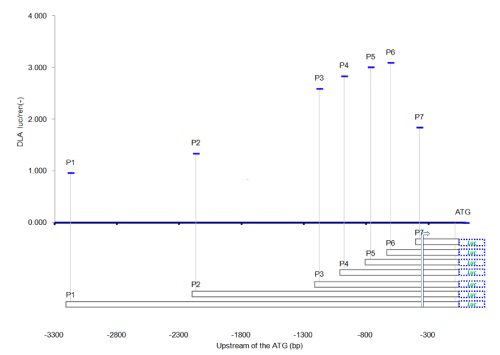 |
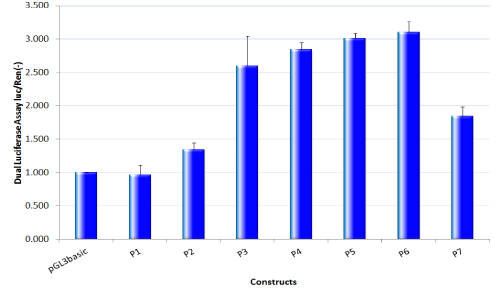 |
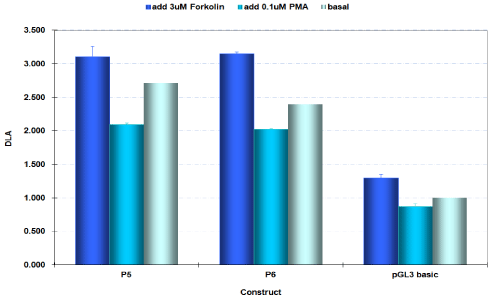 |
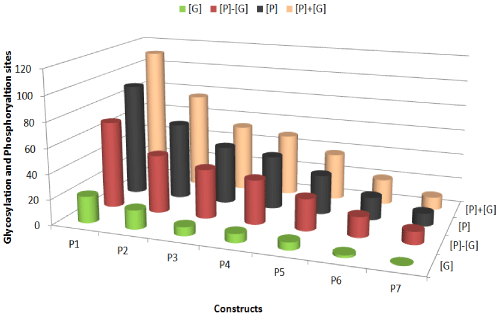 |
| Figure 1a | Figure 1b | Figure 2 | Figure 3 |
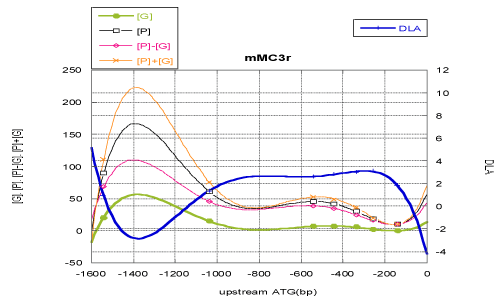 |
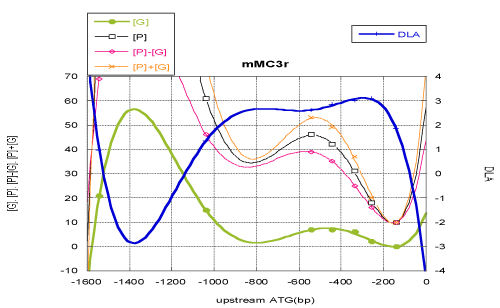 |
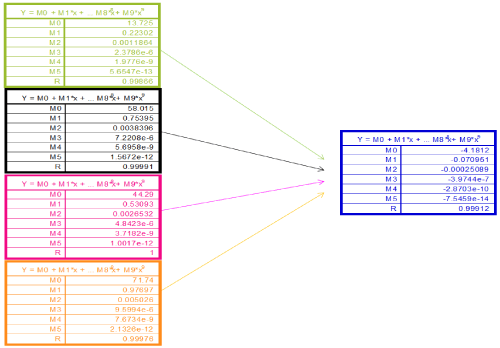 |
| Figure 4a | Figure 4b | Figure 4c |
Relevant Topics
- Android Obesity
- Anti Obesity Medication
- Bariatric Surgery
- Best Ways to Lose Weight
- Body Mass Index (BMI)
- Child Obesity Statistics
- Comorbidities of Obesity
- Diabetes and Obesity
- Diabetic Diet
- Diet
- Etiology of Obesity
- Exogenous Obesity
- Fat Burning Foods
- Gastric By-pass Surgery
- Genetics of Obesity
- Global Obesity Statistics
- Gynoid Obesity
- Junk Food and Childhood Obesity
- Obesity
- Obesity and Cancer
- Obesity and Nutrition
- Obesity and Sleep Apnea
- Obesity Complications
- Obesity in Pregnancy
- Obesity in United States
- Visceral Obesity
- Weight Loss
- Weight Loss Clinics
- Weight Loss Supplements
- Weight Management Programs
Recommended Journals
Article Tools
Article Usage
- Total views: 13495
- [From(publication date):
December-2013 - Aug 28, 2025] - Breakdown by view type
- HTML page views : 8908
- PDF downloads : 4587
